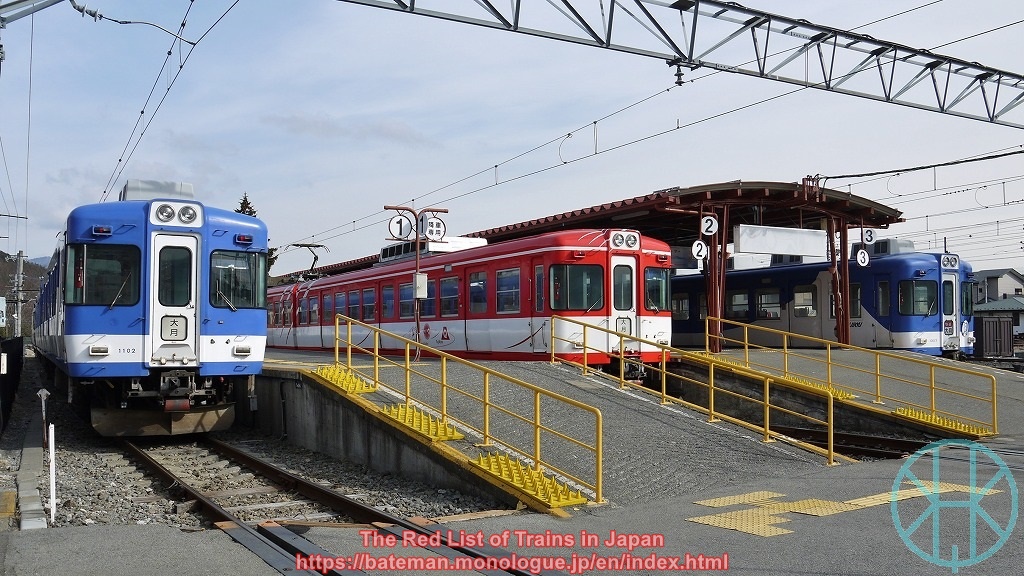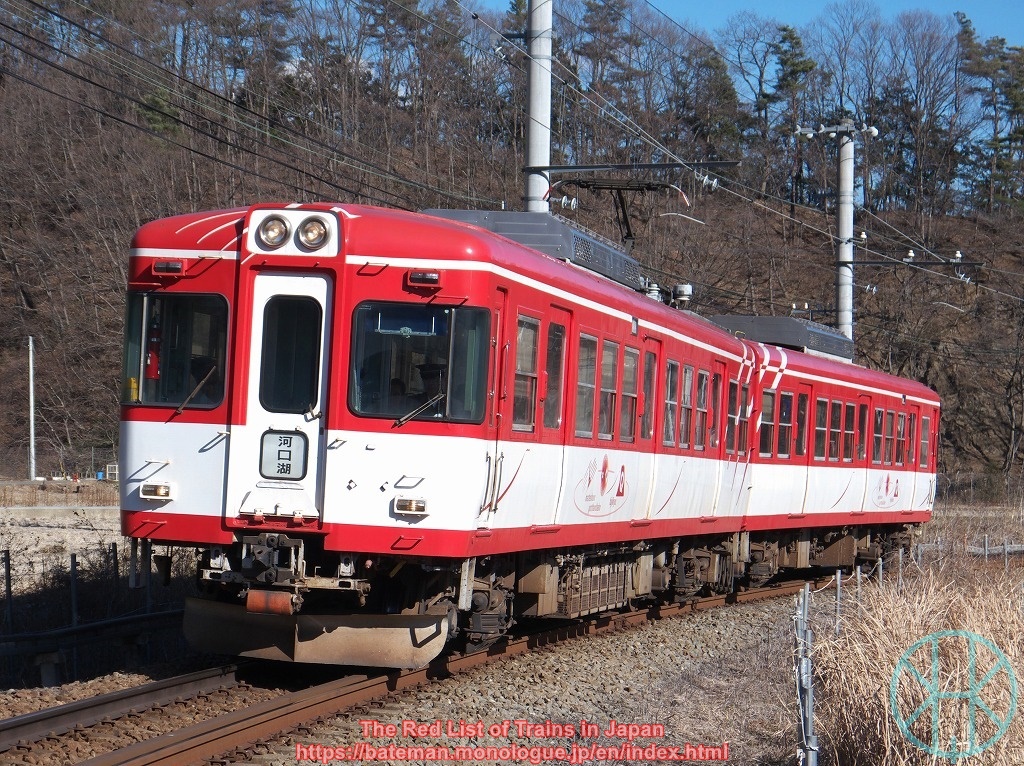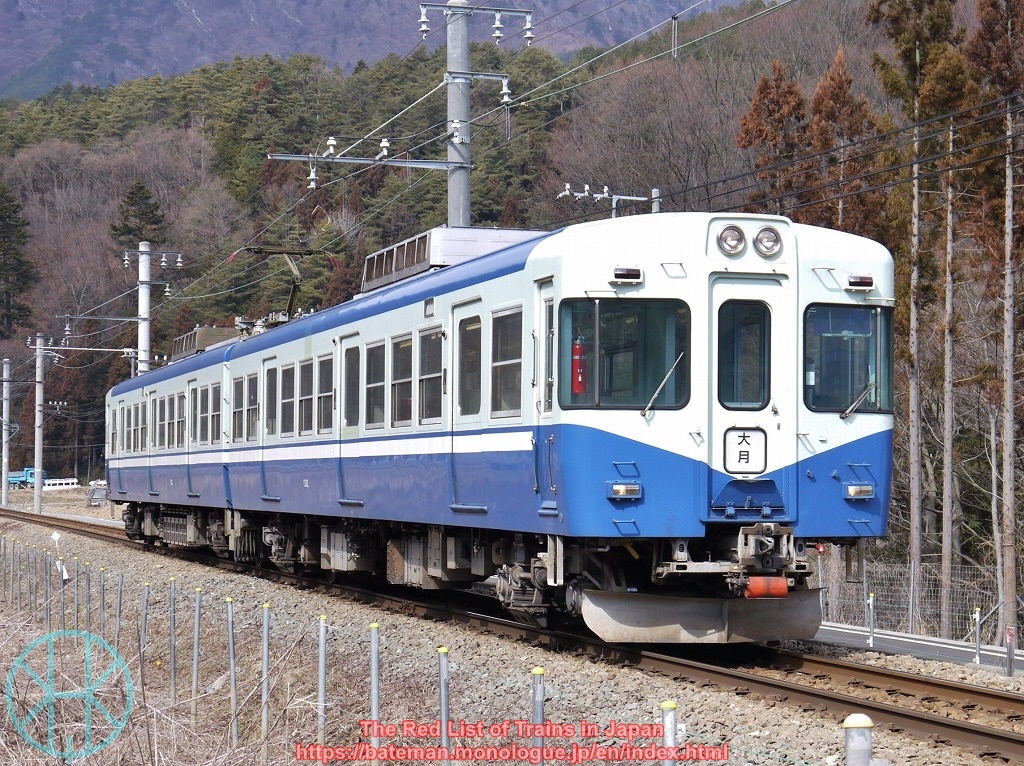Fujikyu 1000 and 1200 series

Data (as of 5 Apr 2025)
| Status: | Critically Endangered |
| Constructed in: | 1966-69 |
| No. introduced: | 18 |
| Registered: | 4* |
*Trains used by Fujikyu only, excluding 9000 series of Gakunan Electric Train (see below).
History
The 1000 and 1200 series were converted from Keio 5000 series, which was operational in 1963-96. When the 5000 series was withdrawn, 18 carriages were resold to Fujikyu and rearranged to nine two-carriage units in 1994-96. Two units were renamed 1000 series and others became 1200 series. They are almost the same, but the 1000 series has longitudinal seating while the 1200 series has transverse seating.
The 1000 and 1200 series have been used for stopping services, but some 1200 series units are also used for fast services. When there is a lack of available train, they run as Limited Express Fujiyama instead of Fujisan Express, in which case a limited express ticket is slightly cheaper than usual. In 2009, a 1200 series unit was dramatically refurbished and named Fuji Tozan Densha, and used for semi-fast services that require seat reservation.
Both series have been replaced with 6000 series since 2012. A unit was resold again to Gakunan Electric Train in Shizuoka Prefecture in 2018, which is now called 9000 series.
There are still several ex-Keio 5000 series trains in Japan, such as Kotoden 1100 series and Iyotetsu 700 series.
Current Operations & Future Prospects
Only Fuji Tozan Densha unit in service. It is rumoured that it is no longer suitable for inbound tourists due to the outdated accommodation so that it does not run often. The company plans to introduce new trains (likely to be second-hand) so that the 1000 series is likely to be withdrawn by 2025.
Photos

Fuji Tozan Densha is painted brown, and resembles the very first Fujikyu train in the 1920s.

The standard Fujikyu livery for the 1000 and 1200 series.

Matterhorn Train was named after Matterhorn Gotthard Bahn in Switzerland, as they concluded a partnership agreement.

"Historical livery", the way that Fujikyu trains were painted in the 1950s.

In 2012, a 1000 series unit was restored to the original livery of Keio.
(Updated: 5 Apr 2025)
